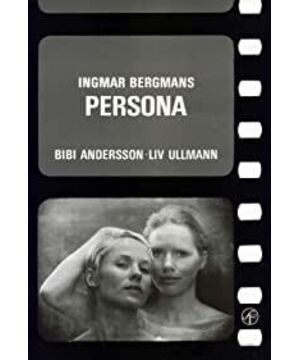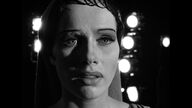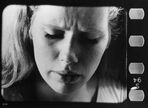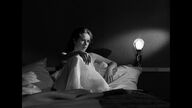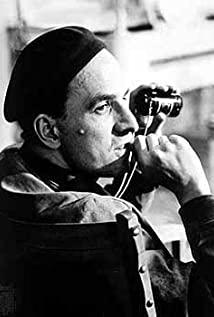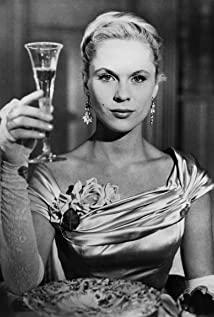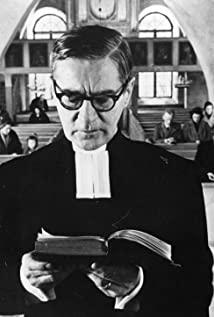The source of the film’s creative inspiration is known to the world: Bergman was lying in bed every day while he was recuperating and doing nothing. He saw two women sitting on the shore with their hands. One day, one stopped talking, and the other continued to chatter. , So Bergman’s scene gradually became concrete, but he could not directly translate this idea into a script. Knowing that one day he saw a picture of Bibby Anderson and another actress, and they looked alike, so the selection of a double hostess was finalized. This other is the famous Liv Uman, another screen muse of Bergman.
Regarding the beginning of the film, many people were puzzled. In fact, it was mentioned in more detail in Bergman's autobiography "Magic Lamp". We first saw a few broken, weird editing passages, including the "click" of the film machine, slaughtered animals, bloody internal organs, spiders, silent films, and nails on the palm of the hand. These passages are in the middle of the film and The endings are reproduced to varying degrees, setting the tone of the film-a dream that transcends the present is more powerful than reality, especially the nail in the palm is directly reminiscent of the surreal originator "An Andalu Dog". These experiences come from Bergman’s experience of passing through the morgue when he was 10 years old. In front of a young female corpse, he was both nervous and excited, as if he could still feel the breathing and heat of the corpse. The trembling experience of childhood made Bergman very To show in his works, he once intended to be useful in "Wolf's Moment", but failed; so in the prelude to "Mask" he tried again; and in the later "Scream and Drizzle" Try again to explain this sense of transcendence. Bergman tried to convey the mystery of "dead interfering with the living", abandoning the fetters and obstructions of reality, he directly attacked the suffering and suffering of human inner emotions, and focused on exploring the mystery of life and death.
At the beginning of the feature film, there were a group of close-up shots that looked like corpses. After the boy was awakened and looked straight into the camera, he stroked a blurry photo through the glass. The key information was revealed through a reversed lens-the uncertainty of identity (face of the face). Overlap), glass (communication) blocking, camera's mirror direct-viewing function. The 90-degree direct-view camera dominates the film, usually single-person close-ups, and the characters reach the soul through a long and stoic gaze. In addition to the actor's superb acting skills, Bergman's training is indispensable. He claims to be an agent of the actor's eyes and ears, giving advice, inducing performance, encouraging or vetoing, and following intuition.
Not only that, Bergman is also a master of audiovisual language. Let’s talk about lighting first. Remember that when watching "Winter Light", the changes in light reflect the psychological changes. The inner struggle of the pastor in the church is clearly explained through the flow of light. In this film, it is also directly directed at the two women. The protagonist's relationship changes. When Emma and Elizabeth met in the ward for the first time, the light was even and there was no focus, indicating that the relationship between the two was equal; when Emma talked, Elizabeth was lying on the bed halfway with the light source on her left side, diagonally A ray of light shines on her shining forehead, as quiet as the sea, solemn as a god, and her eyes are deep and long as eternal. At this time, the relationship between the two has quietly changed, and the clothes have been adjusted accordingly-Emma's serious nurse The uniform became a soft (weak) white pajamas, while Elizabeth’s white hospital clothes became black with a high-necked collar; at the final stage, the two had a close-up of their side faces and switched back and forth, their faces in half-bright and half-dark light. , Gradually merged into one, meaning the exchange from the body to the soul.
Bergman chose the film scene to be on his favorite Faroe Island, and the special geographical landscape and weather gave birth to a unique character. There are rugged mountains, lonely and desolate, and the rocks washed by glacial rivers. The coastline seems endless, the trees curve sharply, and the barrenness of the location successfully creates a strong sense of isolation and oppression. The vast and boundless space shows the atmosphere of silence and confrontation. It means that the fierce and passionate emotions of the characters are in sharp contrast with it. Andrei Tarkovsky's "Sacrifice" was also filmed on Faroe Island, and "Mask" is also Tarkovsky's top ten films. As for the interior scene, as a loyal fan of Strindberg, Bergman pays more attention to the dramatic tension within the scene. Compared with the visual effects of large color blocks that were highlighted in the middle and late stages (such as "Autumn Sonata" and "Scream and Drizzle"), in the black and white period indoor drama, Bergman mostly used the high contrast of the light source to highlight the characters' thoughts, or use props Interpreting the emotional trend, curtains and mirrors are the most common in this film. Peeping at each other from behind the curtains not only hints at the distance between the two, but also provides a prerequisite for the infiltration and embezzlement of their identities; the night that the relationship between the two changed qualitatively, Elizabeth's visit to Emma late at night was also covered by the flapping of the curtains. Completed under. The mirror does not appear in the film as a physical object, but after watching this film, the audience's greatest feeling is the reflection in the "mirror", whether it is the direct look of the character that makes people look in the mirror or the reflection of two women , As in a mirror, the film always emphasizes the reflection & entry function of the screen as a "mirror" or "glass". As Borges said: "I am a person who is afraid of mirrors/not only facing impenetrable glass/inside a non-existent uninhabitable space." Many fans after watching "Mask" They all mean that in just 85 minutes, the torment is like three hours, the horror is like a nightmare, and what makes it scary, it seems that this shudder comes more from the spiritual level, and the mirror "contains an illusion and profoundness carefully created by the reflection. The world", Emma and Elizabeth fell in this dark world.
The most fascinating part of "Mask" is still Bergman's lifelong motif. The film was shot in his mature golden age. Before that, there was already a world-famous "Trilogy of Silence". Among them, "Silence" is even "Masque". "Prelude", the same dual heroine, little boy, ancient unique closed environment, soul and body battle, successful writing practice, three years later, "Mask" turned out to be another peak of his creative career, from then on Bergman is more obsessed with insight into the inner world. He is always writing about the alienation of family relationships and the questioning of divinity. This time he has faded away from the religious color, and he focuses on writing about the falseness, ugliness and distortion of marriage/love. When Emma opened her heart to Elizabeth for the first time, she uncovered her seemingly bright and happy emotional life, and confided in her unknown past, just as Zhang Ailing said: "Life is a gorgeous robe, full of lice." Is this true? Bergman's renewed irony of his childhood family life? The shadow of his father runs through his life. It is a knot he can never untie. It describes the coldness, paranoia, and fragility in the parent-child relationship, which is almost covered in most of his works. Emma mentioned it when he condemned Elizabeth. "There is no motherhood", the bondage of marriage and children compresses women's self-space, making women afraid of taking responsibility, preferring to face pain and death with evasion and hypocrisy. This typical case is explained in more detail in "Autumn Sonata". The picture of the child that Elizabeth tore off and the picture of the concentration camp she stared at have some subtle connotations, just as she saw the Saigon monk on TV in the ward before, Bergman is not Godard, his lens Wandering and shouting among lonely individuals, seemingly unrelated details actually refer to the violent nature of both social macro-events or individual micro-emotions. Wars and systems can produce force-based violence, and indifference and alienation can create spiritual violence. The exchange between Emma and Elizabeth is also part of the "violent" squeeze. Even if their faces overlap and their identities are confused, they are still islands of each other.
The forward-looking nature of "Mask" lies in the creation of two protagonists with different personalities but merged into one. It can be regarded as the first to open up the character/personality split, which has greater inspiring significance for similar films in future generations, and allows the world to witness Bergman. Gui Gao's famous saying that "movie is not a record, but a dream" is supported. The vagueness of reality and reality in "Mask", the relationship between the two can be regarded as a summary and epitome of all relationships. It has a strong universality. Pain is the essence of life. Spiritual purgatory is the ultimate destination. When the mask falls off, In the collapse, the images overlap, and they are bound to be alienated again once they were infinitely close. The huge stone sculpture at the end also coincides with Elizabeth's stiff expression when she returns to the stage. Some of the jump cut shots and surreal passages interspersed in it can be seen as the flow of inner consciousness and the imaging of psychological distortions. For example, Emma’s anger when she discovers that she becomes the subject of research is expressed by the distortion and fracture of the screen. These techniques both ensure the narrative. It is unobstructed, and can perfectly combine the flow of emotion with the rhythm of the camera, mysterious like the stars in the dark night, and lonely like the prehistoric rocks on the Faroe Islands. Bergman said: "My films have never intended to be realistic. They are mirrors, fragments of reality, almost like dreams."
Published in the March 2016 issue of "Watching Movies • Midnight Field"
View more about Persona reviews


